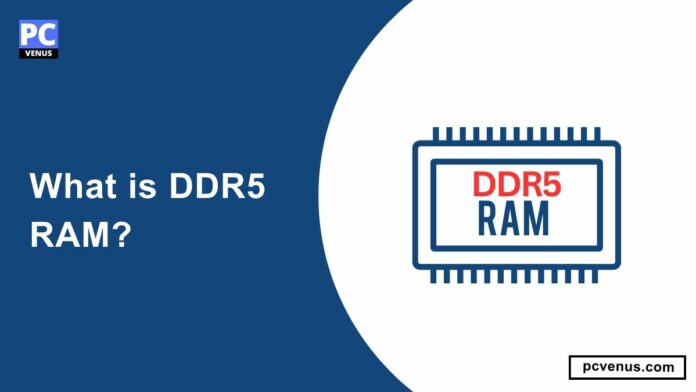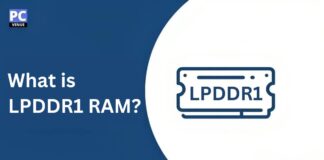Nowadays people think that any work should be done well and as quickly as possible. Similarly, most of the technology focuses on speed; it is not only the speed of the device that should be good, but its performance should also be good.
With the advent of DDR RAM, computer device speed and performance have improved. DDR5 RAM is the 5th generation of DDR RAM, with higher capacity and better speed. That is why it has become the standard for modern computers. It transfers data much faster than DDR4. Apart from having good performance, it is also energy efficient.
In this article, we will learn more about DDR5 RAM and find out that its introduction has improved the speed and performance of modern computers. We will also find out how much impact it has on battery life.
What is DDR5 RAM
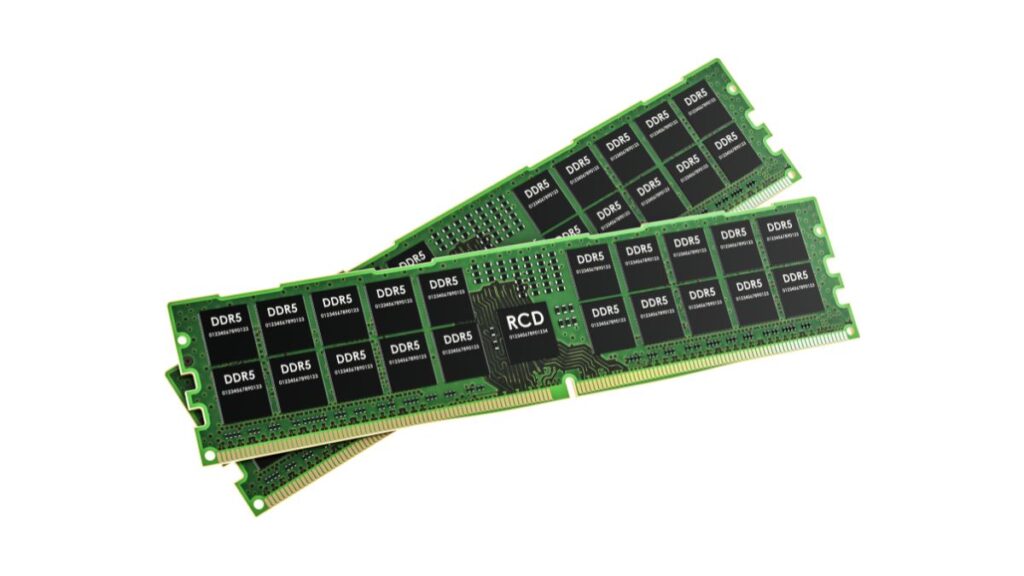
DDR5 is the fifth and latest generation of the DDR RAM series, which stands for Double Data Rate 5 Synchronous Dynamic Random-Access Memory. DDR5 RAM comes with many improvements over DDR4, such as higher data transfer speed, better energy efficiency, and larger capacity.
Advantage of DDR5 RAM?
Fast Data Transfer Rates
The biggest advantage of DDR5 RAM is that it transfers data much faster than its previous generation DDR4. This faster computer loads files faster, performs better in demanding applications, and multitasks with ease. It loads even the most modern games quickly.
Its data transfer rate is almost twice that of DDR4, starting at 4.8 Gb/s and reaching a maximum of 9.6 Gb/s, compared to DDR4’s 3.2 Gb/s to 6.4 Gb/s.
The maximum speed of DDR4 is about 3200 MT/s, while DDR5 has already reached the speed of 6400 MT/s and is expected to increase even more to about 8800 MT/s in the future.
It uses two independent 32-bit channels for faster data transfer, whereas DDR4 uses a single 72-bit channel. This is beneficial for multi-threaded workloads.
Even modern games load very fast, and there are no slowdowns when editing high-resolution footage. Apart from this, multitasking is done very easily.
Increased Capacity
The best thing about DDR5 RAM is that not only is its performance speed higher than that of the previous generation, but its capacity is also higher. While DDR4 has a maximum capacity of 64GB, its maximum capacity is up to 512GB, which is 8 times more than DDR4, which takes the system performance to a new level.
This increased capability is used to mine massive datasets in scientific simulations, edit 8K video footage with seamless playback, and create complex 3D models.
The previous generation had a limitation in performing specific tasks, which DDR5 has eliminated, so with DDR5, multiple resource-intensive applications run simultaneously without any hassle. Due to its increased capacity, the tension of frequently upgrading RAM is gone.
High Bandwidth
DDR5 RAM has a higher bandwidth than DDR4, which is important for improving data transfer rates and system performance. Its exact bandwidth can vary, but it is designed to provide a substantial boost over the bandwidth offered by DDR4.
The bandwidth of DDR4 ranges from 17 GB/s to approximately 25 GB/s, while the bandwidth of DDR5 ranges from 32 GB/s to approximately 64 GB/s, which is more than double that of DDR4.
This high bandwidth is beneficial for gaming, content creation, scientific simulations, and memory-intensive applications that handle large data volumes. This increased bandwidth allows faster access and transfer of data, improving system response and performance.
Improved Power Efficiency
Despite its performance and capacity being higher than the previous generation, it consumes much less power. Due to its energy efficiency, the battery life of the system in which it is installed is also good. While DDR4 operates at 1.2V, DDR5 operates at an even lower voltage, around 1.1V. Due to its low power consumption, it also generates very little heat, keeping PC components cooler, improving stability, and extending lifespan.
Where DDR4 voltage regulation happens on the motherboard, DDR5 handles it, allowing for more precise control and efficient power delivery and reducing energy wastage.
DDR5 has two independent 32-bit channels that boost performance as well as memory access efficiency, reducing unnecessary data transfers and reducing power consumption.
Error correction and data accuracy
Data is not always accurate, which may result in errors during transmission, storage, or retrieval. This is where error correction and data integrity act as guardians of valuable information.
DDR5 has technology that detects and corrects errors to be accurate, complete, and consistent, preventing system failures.
If the data is inaccurate, it may lead to erroneous results in scientific research, financial transactions or medical diagnosis. That’s why keeping data clean is essential for accuracy and trust.
DDR5 vs DDR2 RAM
There is a huge difference between DDR5 RAM and DDR2 RAM in every field like performance, data transfer rate, and power consumption.
The data transfer rate in DDR5 is 50% higher than DDR2, DDR5 operates at a maximum clock speed of Up to 8400 MT/s, while DDR2 has a maximum clock speed of 800 MT/s. Due to this, DDR5 loads files quickly, applications run smoothly, and multitasking is done easily.
DDR5 uses independent 32-bit channels for data access, which leads to more efficient data access, whereas DDR2 uses a single 64-bit channel for data access, which makes it take longer for multi-threaded tasks.
The capacity of DDR5 is much more than DDR2. DDR5 has a maximum capacity of up to 512GB, while DDR2 has a maximum capacity of 8GB. This increased capacity of DDR5 allows more demanding tasks to be completed faster.
DDR5 has better performance than DDR2 and also reduces power consumption. DDR5 provides more precise power distribution on individual modules, while DDR2 relies on the motherboard for voltage control. It operates at 1.1V, whereas DDR2 requires 1.8V. Due to its low power consumption, it is perfect for devices where battery life is important, such as portable laptops and gaming laptops.
DDR5 comes with an on-die error-correction code for enhanced data integrity, preventing system failures, and keeping data more secure, whereas DDR2 lacks this feature.
| Feature | DDR5 | DDR2 |
|---|---|---|
| Data Transfer Rates | Higher (Up to Up to 8400 MT/s) | Lower (Up to 800 MT/s) |
| Generation | 5th generation | 2nd generation |
| Capacity | Higher (Up to 512GB) | Lower(Up to 8GB) |
| Voltage | Lower (Operate at 1.1 V) | Higher(Operate at 1.8 V) |
| Bandwidth | Generally higher (64GB/s) | Lower (6.4GB/s) |
| Compatibility | No backward or forward compatible | No backward or forward-compatible |
DDR5 vs DDR3 RAM
There is a huge difference in every field between DDR5 RAM and DDR3 RAM.
The data transfer rate in DDR5 is almost 50% higher than that of DDR3, with DDR5 operating at a maximum clock speed of 8400 MT/s and higher, while DDR3 has a maximum clock speed of 1600 MT/s.
DDR5 uses independent 32-bit channels for data access, which results in more efficient data access while DDR3 uses a single 72-bit channel for data access, making it slightly slower.
The capacity of DDR5 is much more than DDR3. The maximum capacity of DDR5 is up to 512GB, while the maximum capacity of DDR3 is 16GB. Due to this increased capacity of DDR5, more demanding tasks like multitasking and intensive tasks are done faster.
DDR5 not only performs better than DDR3 but also reduces power consumption. DDR5 provides more precise power distribution on the individual, while DDR3 relies on the motherboard for voltage control. It operates at 1.1V, whereas DDR3 requires 1.5V.
DDR5 comes with an on-die error-correction code for enhanced data integrity, preventing system failures and keeping data more secure, whereas DDR3 lacks this feature.
| Feature | DDR5 | DDR3 |
|---|---|---|
| Data Transfer Rate | Up to 8400 MT/s | Up to 2133 MT/s |
| Capacity | Up to 512GB | Up to 16GB |
| Power consumption | 1.1V | 1.5V |
| Module Pins | 288 pins | 240 pins |
| Architecture | 16n prefetch | 8n prefetch |
| Burst Length | 8 or 16 | 8 bursts |
| Density | Higher density per module | Lower density per module |
| Error Checking | ECC support (Depends on the motherboard and CPU support) | Non-ECC |
| Backward Compatibility | No backward or forward-compatible | No backward or forward compatible |
DDR5 vs DDR4 RAM
The data transfer rate in DDR5 is more than 50% compared to DDR4, DDR5 works at a maximum clock speed of 8400 MT/s and above while the maximum clock speed of DDR4 is 3200 MT/s which is half of DDR5.
DDR5 uses independent 32-bit channels for data access, allowing for more efficient data access, while DDR4 uses a single 72-bit channel for data access, similar to DDR3.
The capacity of DDR5 is more than DDR4. DDR5 has a maximum capacity of up to 512GB while DDR4 comes with a maximum capacity of 64GB.
The performance difference between DDR5 and DDR4 is huge, yet DDR5 also reduces power consumption. DDR5 provides more precise power distribution on the individual, while DDR4 relies on the motherboard for voltage control. It operates at 1.1V whereas DDR4 requires 1.2V.
Both DDR5 and DDR4 come with on-die error-correction codes for enhanced data integrity that prevents system corruption and keeps data more secure.
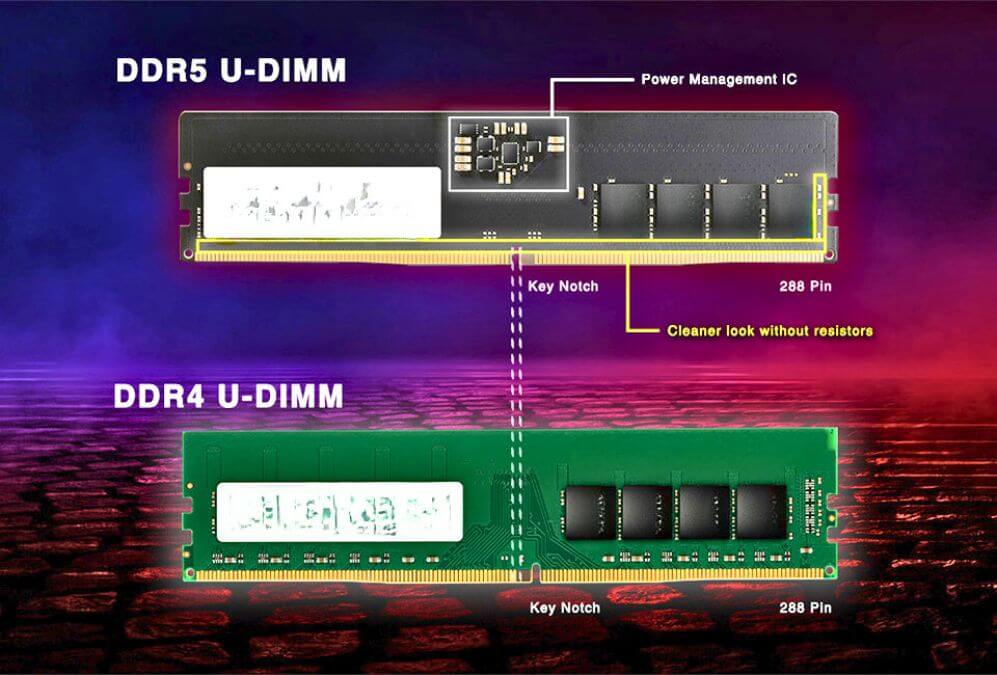
| Feature | DDR5 | DDR4 | DDR5 Advanteges |
|---|---|---|---|
| Data Transfer Rate | Up to 8400 MT/s | Up to 3200 MT/s | Higher bandwidth |
| Capacity | Up to 512GB | Up to 128GB | Higher capacity |
| Power consumption | 1.1V | 1.2V | Lower power |
| Module Pins | 288 pins | 288 pins | N/A |
| Architecture | 16n prefetch | 8n prefetch | Lower latency |
| Burst Length | 8 or 16 | 8 bursts | Higher memory efficiency |
| Density | Higher density per module | Lower density per module | Higher density |
| Error Checking | Support ECC (Depends on the motherboard and CPU support) | Also support ECC (Depends on the motherboard and CPU support) | More intelligent |
| Compatibility | No backward or forward-compatible | No backward or forward compatible | N/A |
What should be kept in mind while choosing DDR5 RAM?
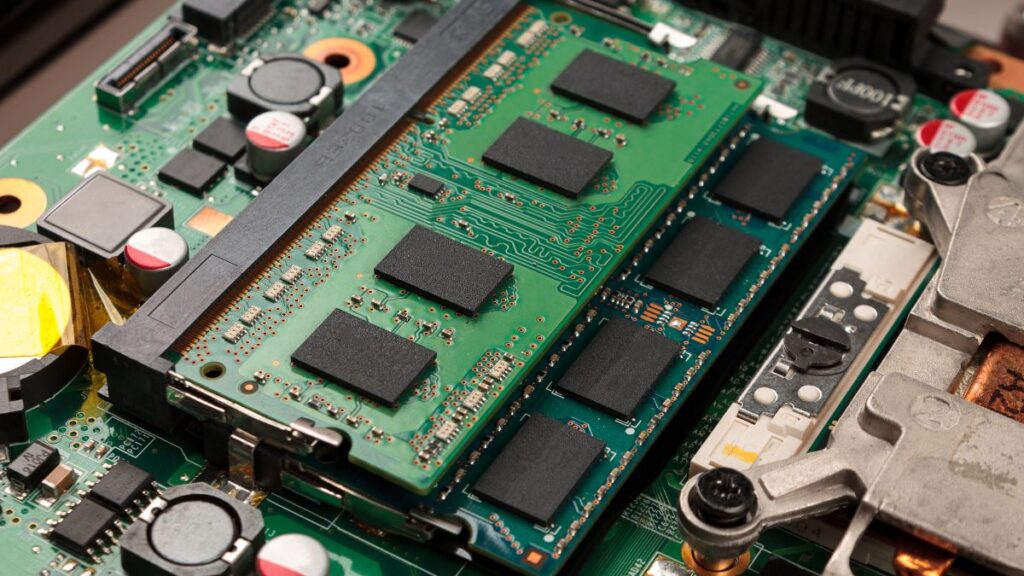
Before choosing any RAM, consider your requirements. If you want to get RAM for demanding applications, such as video editing or 3D rendering, then DDR5 will be right for you, as the new generation of RAM handles demanding tasks with ease. However, if you do daily tasks, such as browsing, data entry, and article writing, then a normal capacity RAM, like DDR2, will be enough for you.
Budget is the most important thing when buying any item. If your budget is not high and you do not do intensive work, then it would not be right for you to buy DDR5 because DDR5 is more expensive than other RAM, like DDR3 or DDR4. On the other hand, if there is no budget constraint for you, then you can buy DDR5 RAM. It will do everything you want to do, whether it is multitasking or playing modern games.
DDR5 is a new generation of RAM that is not compatible with all motherboards. Before buying this RAM, carefully check the instructions on your motherboard. Motherboards are made specifically for DDR5 RAM, so before purchasing any RAM, make sure to check its compatibility with your motherboard.
Along with the motherboard, check the compatibility of your operating system to see if it is compatible with DDR5 or not. Most modern operating systems, like Windows 11 and Linux, handle DDR5 well, while older operating systems, like Windows 7 and 10, do not handle this new generation of RAM.
Consider the speed of RAM, because good RAM speed is very important for better performance of the system. There are many versions of DDR5 RAM, such as DDR5-4000 (PC5-32000), DDR5-4800 (PC5-38400), and DDR5-6400 (PC5-51200), and the speed of all is different, so while buying RAM, choose the best speed. Buy the same RAM.
RAM capacity is also a big factor in system performance. DDR5 comes with higher capacities, ranging from 64 GB to 512 GB, but it is much more expensive. If you do not do heavy demanding work, then DDR4 RAM will also be enough for you. It comes with storage, ranging from 16 GB to 128 GB, on which almost all the work can be done easily.
Battery life is a very important factor for any device, and if your RAM is of generation, like DDR4 or DDR5, then it will contribute to the longer battery life of your device. The performance of older RAM, like DDR2, is not that special and also consumes more battery, whereas DDR5 has good performance but also consumes very less battery.
Before buying RAM, keep the brand in mind, because a good company makes a good one. They use good material to make the RAM, so that it is good and does not get spoiled quickly. RAM manufacturing companies, like Kingston, Corsair, Samsung, and Hynix, all make good-quality RAM.
Final Word
DDR5 RAM comes with higher data transfer rates, increased capacity, and better energy efficiency than all its predecessor DDR RAM series. Its introduction has made multitasking easier and revolutionized modern computers’ speed and performance. By installing it in the computer, the laptop’s speed and performance increase, and it operates at very low voltage, which is also energy efficient.
The only drawback is that it is not compatible with all motherboards. It will only fit the motherboard it is designed for. Since it is a modern RAM, it is a bit expensive. That is why if you want to upgrade from old RAM to this new DDR5 RAM, consider the compatibility, budget, and speed requirements first.
FAQs
Upgrading to DDR5 RAM depends on motherboard compatibility. Check if your specific model supports DDR5 in its specifications, socket type, BIOS and physical slot. The processor should also be compatible. DDR5 is newer and may be more expensive or limited in availability. Confirm that DDR5 is fully supported by your motherboard before attempting an upgrade.
DDR5 RAM helps games run faster and smoother. This is faster than older RAM like DDR4. Some games require loading a lot of graphics and audio. DDR5 can load them faster so games lag less.
But RAM isn’t the only part that affects gaming. Your CPU and GPU also matter.
How much DDR5 helps may depend on the actual game. Some games use more RAM than others. And your specific computer hardware makes a difference.
DDR5 brings benefits but is not necessary for many people. If you’ve just built a PC with DDR4, it’s probably good enough for several years until your needs change. For new builds, evaluate the cost versus performance benefits for your specific workload.
Price: DDR5 is more expensive than DDR4. If you don’t have much money, DDR4 is better.
Speed: DDR5 is faster than DDR4. It can move more data at a time. This can make your computer run better.
Support: DDR5 needs new parts that support it. DDR4 works with old parts that you may already have.
Future: DDR5 is the new type and will get better over time. DDR4 is the old type and will stay the same. If you want to be ready for new things, DDR5 is better.
Use: DDR5 is good for gaming and work that needs a lot of memory. DDR4 is good for normal use and doesn’t need much memory.
DDR5 is the latest generation of computer memory that offers a new feature: on-die ECC. But what is ECC and why does it matter?
– ECC detects and fixes errors in memory data.
– On-die ECC builds the ECC function into the DDR5 chip.
– On-die ECC improves the reliability of the DDR5 chip itself.
– Full ECC protection needs ECC DIMMs with extra check bits and compatible hardware.
– ECC aids data accuracy in servers, workstations, and high-end PCs.
– ECC prevents crashes and lags by fixing memory errors.
